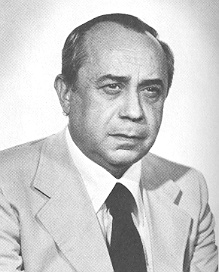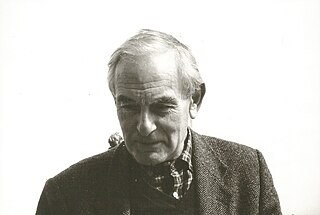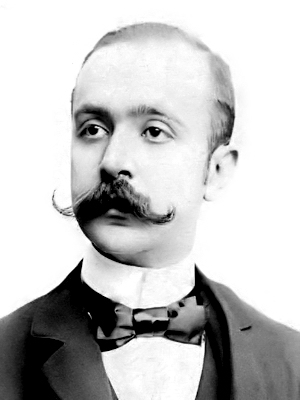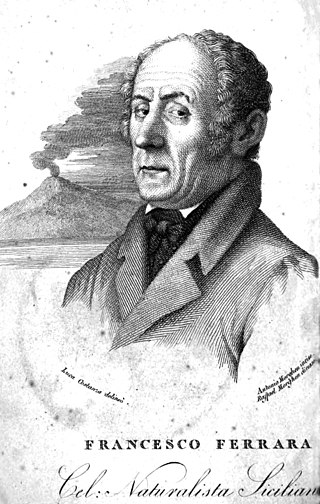
Catania is the second-largest municipality in Sicily, after Palermo, both by area and by population. Despite its reputation as the second city of the island, Catania is the largest Sicilian conurbation, and among the largest in Italy. It has important road and rail transport infrastructures, and hosts the main airport in Sicily. The city is located on Sicily's east coast, facing the Ionian Sea at the base of the active volcano Mount Etna. It is the capital of the 58-municipality region known as the Metropolitan City of Catania, which is the seventh-largest metropolitan area in Italy. The population of the city proper is 311,584, while the population of the Metropolitan City of Catania is 1,107,702.

Leonardo Sciascia was an Italian writer, novelist, essayist, playwright, and politician. Some of his works have been made into films, including Porte Aperte, Cadaveri Eccellenti, Todo Modo and Il giorno della civetta. He is one of the greatest literary figures in the European literature of the 20th century.

Giovanni Carmelo Verga di Fontanabianca was an Italian realist (verista) writer.

Gela is a city and comune (municipality) in the Autonomous Region of Sicily, Italy; in terms of area and population, it is the largest municipality on the southern coast of Sicily. Gela is part of the Province of Caltanissetta and is one of the few comuni in Italy with a population and area that exceed those of the provincial capital.
Mauro Cristofani was a linguist and researcher in Etruscan studies.

Lucos Cozza was an Italian Roman archaeologist.
Canicattini Bagni is a comune (municipality) in the Province of Syracuse, Sicily (Italy), located about 190 kilometres (120 mi) southeast of Palermo and about 20 kilometres (12 mi) southwest of Syracuse. As of 31 December 2004, it had a population of 7,415 and an area of 15.1 square kilometres (5.8 sq mi).

Federico De Roberto was an Italian writer, who became well known for his historical novel I Viceré (1894), translated as The Viceroys.

Marcello Giordani was an Italian operatic tenor who sang leading roles of the Italian and French repertoire in opera houses throughout Europe and the United States. He had a distinguished association with the New York Metropolitan Opera, where he sang in over 240 performances from the time of his debut there in 1993. He founded the Marcello Giordani Foundation to help young opera singers.
The 213th Coastal Division was an infantry division of the Royal Italian Army during World War II. Royal Italian Army coastal divisions were second line divisions formed with reservists and equipped with second rate materiel. Recruited locally, they were often commanded by officers called out of retirement.

Lentini is a town and comune in the Province of Syracuse, southeastern Sicily, located 35 km north-west of Syracuse.

Angelo Italia was an Italian Jesuit and Baroque architect, who was born in Licata and died in Palermo. He designed a number of churches in Sicily, and later worked to reconstruct three cities following the 1693 Sicily earthquake.

ASD SS Leonzio 1909, also commonly known as Leonzio, is an Italian football club located in Lentini.

Rofalco was a fortified late-Etruscan settlement, located about twenty km north of Vulci, at the edge of the Selva del Lamone volcanic plateau. The site controlled the important natural route formed by the valley of the Olpeta stream and contributed to the defense and the organization of the southeastern portion of the ancient territory of Vulci.
Laura Giordano is an Italian lyric soprano.

The Metropolitan City of Palermo is a metropolitan city in Sicily, Italy. Its capital is the city of Palermo. It replaced the province of Palermo and comprises the city of Palermo and 82 other comuni.
Domenico Ligresti was an Italian historian. He was ordinario – full professor – of history at the University of Catania, in the Mediterranean island of Sicily. He wrote extensively on the history and culture of the island.
Angela Bianca Tragni is an Italian journalist and writer. Over her career, she carried out research in the culture of the Italian region Apulia and folklore of Southern Italy. She also wrote books on history, especially the Middle Ages.
Sergio Bettini was an Italian art historian.

Francesco Ferrara was an Italian geologist, active mainly in Sicily, and known for his studies in vulcanology.














